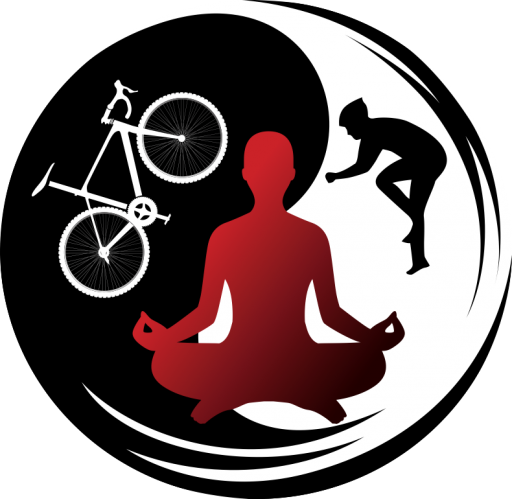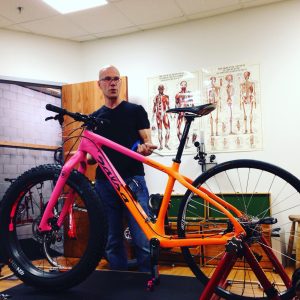The Human Condition

Bicycles are symmetrical, non-adaptive machines, designed and manufactured to geometric averages based on height, limb lengths and proportions. And while manufacturers are growing more concerned about the needs of our diverse cycling population, making geometries and components available in a broad range of configurations and gender-specific designs, each person has unique morphology, flexibility, weight, bone & ligament structure, and genetics – even identical twins.
We are, in fact, as unique as our voice.
To make matters more complex, our knowledge regarding body position is limited to proprioceptive experiences since birth. Sensory Perception is developed in response to stimuli. The ability to sense body-position relative to space and gravity is determined by vestibular, kinesthetic, and proprioceptive mechanisms. Our brain is constantly registering –“feels better/works better”, “feels worse/works worse” – to establish unified-balance in stillness and function.
That said, use caution positioning towards what “feels better.” Frequently we move away from discomfort with overcompensation, simply to avoid any chance of revisiting an uncomfortable position.
Professional bicycle fitting is an iterative process of eliminating the range of positions/adjustments that are NOT optimal — both subjectively and objectively — to discover what in that moment is the best possible outcome. It is an iterative collaboration between client and technician that increases proprioceptive awareness, mechanical function, comfort, and endurance. Proper fit allows a body to quickly adapt to better aerodynamics and training effects, by correct designation of phaic and postural muscle function.
Bike Fit is Not Static!
5-years ago I started sponsoring cyclists/triathletes. My plan was to provide a kick-ass fitting at the beginning of each season and monitor for injuries and bike changes from there. I invited clients to meet monthly for sensory motor conditioning drills (efficiency training) and position refinement. Month #1 after the “kick-ass” fitting, I noticed that my riders’ fittings had deteriorated significantly. Specifically, the saddles were low and stems, short.
But I am the “Guru” I thought to myself, someone has been messing with my artistry!
What happened (confirmed by EMG testing) is that deep spine stabilizers were handling postural duties without as much help from larger, extensor muscle groups. I suspect that the lumbar spine responds poorly to a horizontal position, inheret to traditional cycling — especially when positional attributes are pulling the more stable thoracic spine and pelvic in opposing directions. This tension translates to the pelvis, which impacts effective leg length. It also compresses the trunk, which impacts reach.
The body is always looking to be more efficient. When deep stabilizers (multifidus, interspinalis, etc.) support the trunk, phasic muscles can focus on pedaling, instead of taking up the slack. The result is that a person goes faster, with less effort, more comfort.



